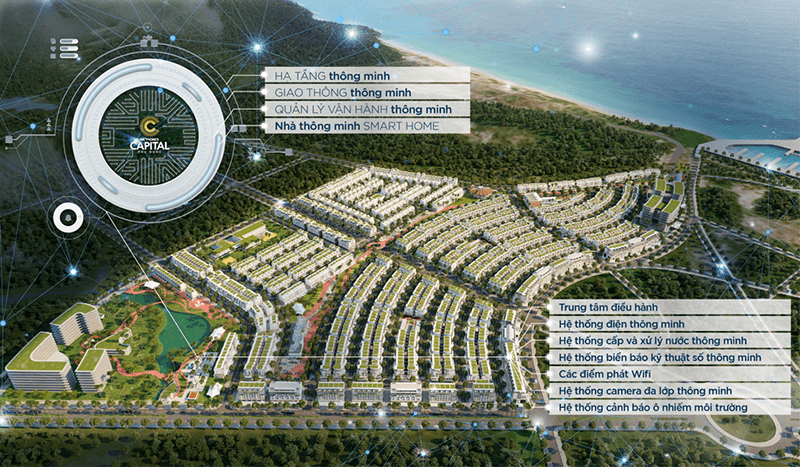- Emerging Trends Reshape Landscapes: Crucial Business and Technology news Impacts Global Markets.
- The Rise of Artificial Intelligence and Machine Learning
- AI in Financial Services
- Cybersecurity: A Growing Threat Landscape
- The Role of Zero Trust Architecture
- The Push for Sustainable Business Practices
- Supply Chain Resilience and Sustainability
- The Future of Work: Remote, Hybrid, and Agile
- The Impact of Automation on Employment
Emerging Trends Reshape Landscapes: Crucial Business and Technology news Impacts Global Markets.
The modern business and technological landscape is in a state of constant flux, driven by rapid innovation and evolving global dynamics. Keeping abreast of current events, specifically crucial business and technology news, is no longer simply beneficial—it’s essential for making informed decisions and maintaining a competitive edge. These shifts are impacting markets worldwide, consequently requiring businesses and individuals alike to adapt swiftly and strategically. Understanding these emerging trends is paramount to navigating the complexities of the 21st-century economy.
This article will delve into the key trends reshaping industries, focusing on advancements in artificial intelligence, the evolving cybersecurity threat landscape, and the increasing importance of sustainable business practices. We will also explore the implications of these changes for financial markets, global trade, and the future of work, offering insights into how organizations can thrive in this dynamic environment. The information presented here is a result of sustained observation of relevant news and analysis.
The Rise of Artificial Intelligence and Machine Learning
Artificial Intelligence (AI) and Machine Learning (ML) are arguably the most transformative technologies of our time. They’re no longer futuristic concepts; they’re integral to a vast and growing range of applications, from personalized marketing and fraud detection to medical diagnosis and self-driving vehicles. Investment in AI continues to surge, fueled by the potential for increased efficiency, improved decision-making, and the creation of entirely new business models.
However, the proliferation of AI also presents challenges. Ethical concerns regarding bias in algorithms, job displacement due to automation, and the potential for misuse of AI technologies are attracting increasing scrutiny from regulators and the public. Businesses using AI must prioritize responsible development and deployment practices to build trust and mitigate risks. This requires investments in fairness, transparency, and accountability.
AI in Financial Services
The financial services industry has been quicker than most to embrace AI, recognizing its potential to streamline operations, reduce costs, and improve customer experience. AI-powered chatbots provide instant customer support, algorithmic trading executes trades at high speeds, and machine learning models assess credit risk with greater accuracy. However, the increasing reliance on AI also introduces new vulnerabilities. Sophisticated cyberattacks targeting AI systems can have devastating consequences, making robust cybersecurity measures more critical than ever.
The integration of AI also brings about questions of regulatory compliance. Financial institutions must ensure that their AI systems adhere to fair lending practices, avoid discriminatory outcomes, and protect customer data. Ongoing monitoring and auditing are essential to maintain compliance and mitigate legal risks. Here’s a comparison of traditional financial analysis versus AI-driven insights:
| Speed | Relatively Slow | Extremely Fast |
| Data Volume | Limited Data Sets | Large and Diverse Data Sets |
| Accuracy | Subject to Human Error | Higher Accuracy with Machine Learning |
| Cost | High Labor Costs | Lower Operational Costs |
| Objectivity | Potentially Biased | More Objective and Data-Driven |
Cybersecurity: A Growing Threat Landscape
As businesses become increasingly dependent on digital technologies, the threat of cyberattacks continues to escalate. Ransomware attacks, data breaches, and phishing scams are becoming more sophisticated and frequent, posing significant financial and reputational risks. The cost of cybercrime is estimated to be in the trillions of dollars annually, and the trend is expected to continue upward.
Organizations must adopt a proactive approach to cybersecurity, implementing robust security measures such as multi-factor authentication, intrusion detection systems, and regular security audits. Employee training is also crucial to raise awareness of phishing scams and other social engineering tactics. Collaboration and information sharing between businesses and government agencies are essential to combat the evolving threat landscape.
The Role of Zero Trust Architecture
Traditional cybersecurity models often rely on a “castle-and-moat” approach, assuming that everything inside the network is trusted. However, this approach is becoming increasingly ineffective in the face of sophisticated attacks. Zero Trust Architecture (ZTA) flips this model on its head, assuming that no user or device should be trusted by default, regardless of their location or network affiliation. Every access request must be verified before being granted access to resources.
Implementing ZTA requires a shift in mindset and a comprehensive overhaul of security infrastructure. It involves implementing strong authentication mechanisms, micro-segmentation of networks, and continuous monitoring of user behavior. Here’s a list outlining key components of a successful ZTA implementation:
- Multi-Factor Authentication (MFA): Requiring multiple forms of verification before granting access.
- Least Privilege Access: Granting users only the minimum necessary access to perform their duties.
- Micro-Segmentation: Dividing the network into smaller, isolated segments.
- Continuous Monitoring and Analytics: Tracking user behavior and identifying anomalies.
- Device Security Posture: Assessing the security of devices before allowing access.
The Push for Sustainable Business Practices
Environmental, Social, and Governance (ESG) factors are becoming increasingly important to investors, consumers, and employees. Businesses are facing growing pressure to adopt sustainable practices, reduce their carbon footprint, and address social and ethical concerns. This isn’t just about “doing the right thing”; it’s also about mitigating risks, enhancing brand reputation, and attracting investment.
Sustainability initiatives can range from reducing energy consumption and waste generation to investing in renewable energy sources and promoting diversity and inclusion. Transparency and reporting are essential to demonstrate progress and build trust with stakeholders. Companies that prioritize sustainability are more likely to attract and retain top talent, as well as gain a competitive advantage in the marketplace.
Supply Chain Resilience and Sustainability
Supply chains are complex and interconnected, and disruptions can have cascading effects. Recent events, such as the COVID-19 pandemic and geopolitical instability, have highlighted the need for greater supply chain resilience. Sustainable supply chain practices, such as diversifying suppliers, reducing reliance on single sources, and promoting ethical labor standards, can help mitigate risks and ensure business continuity.
Companies are also increasingly focused on tracing the origins of their products and materials to ensure responsible sourcing. Blockchain technology can play a role in enhancing supply chain transparency and accountability, allowing consumers to verify the authenticity and sustainability of products. Here’s an example of the impact of ESG ratings on investment decisions:
- Investor Demand: Growing demand for ESG-focused investments.
- Risk Management: ESG factors can identify potential risks and opportunities.
- Long-Term Performance: Companies with strong ESG performance may experience better long-term financial results.
- Reputational Benefits: Positive ESG ratings can enhance brand reputation.
- Regulatory Compliance: Increasing government regulations related to ESG reporting.
The Future of Work: Remote, Hybrid, and Agile
The COVID-19 pandemic accelerated the shift towards remote and hybrid work models. Many businesses have discovered that employees can be just as productive – if not more so – working from home or from flexible locations. This has led to a reassessment of traditional office space requirements and a greater emphasis on employee work-life balance.
However, managing a remote or hybrid workforce presents challenges. Maintaining team cohesion, fostering collaboration, and ensuring data security require new tools and strategies. The rise of agile work methodologies, emphasizing flexibility, iteration, and customer feedback, is also transforming how work is done.
The Impact of Automation on Employment
Automation is transforming the nature of work, automating repetitive tasks and creating new opportunities in areas such as AI development, data analytics, and cybersecurity. While automation may lead to job displacement in some sectors, it also has the potential to create new, higher-skilled jobs. Investing in education and training programs is essential to prepare workers for the jobs of the future.
The skills gap is widening, and businesses are struggling to find workers with the necessary skills to fill open positions. Lifelong learning and upskilling are becoming increasingly important for individuals to remain competitive in the job market. A proactive approach to workforce development will be critical to navigate the changing landscape of work.
These interconnected trends – the rise of AI, the escalating cybersecurity threat, the push for sustainability, and the evolving nature of work – are reshaping the global business landscape. Organizations that embrace these changes and adapt their strategies accordingly will be best positioned to thrive in the years to come. Staying informed through diligent observation of crucial business and technology happenings and responding with foresight is not simply advantageous, but vital for continued success.



























